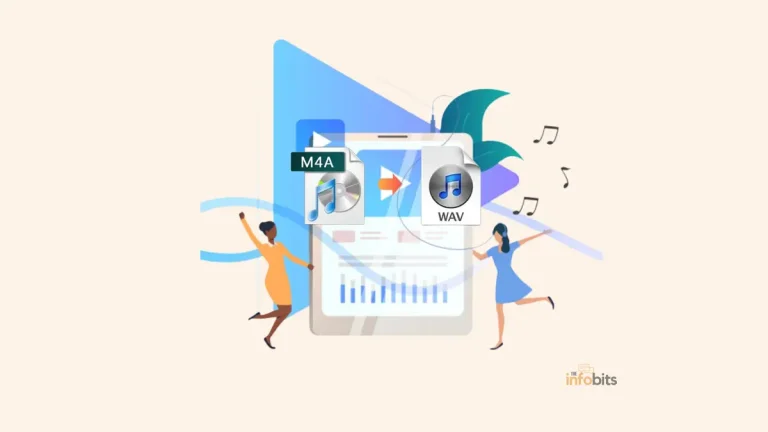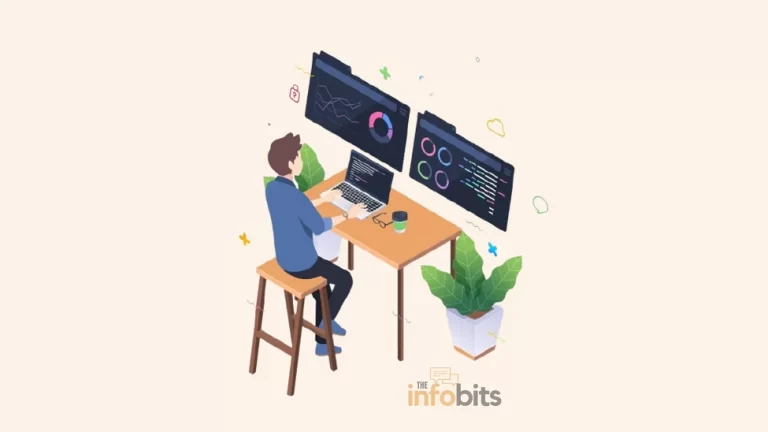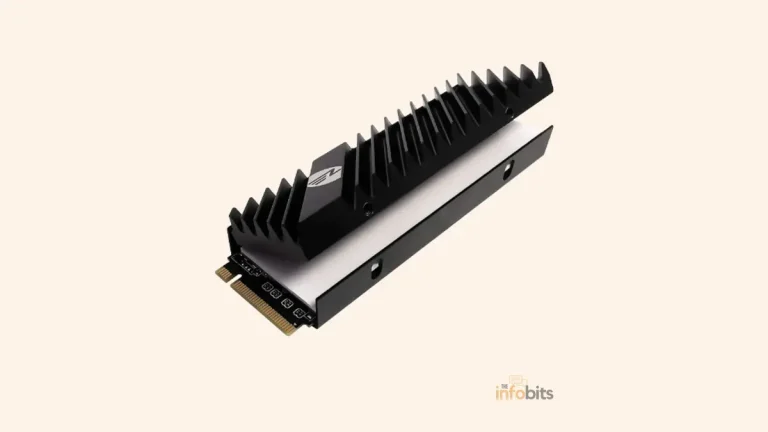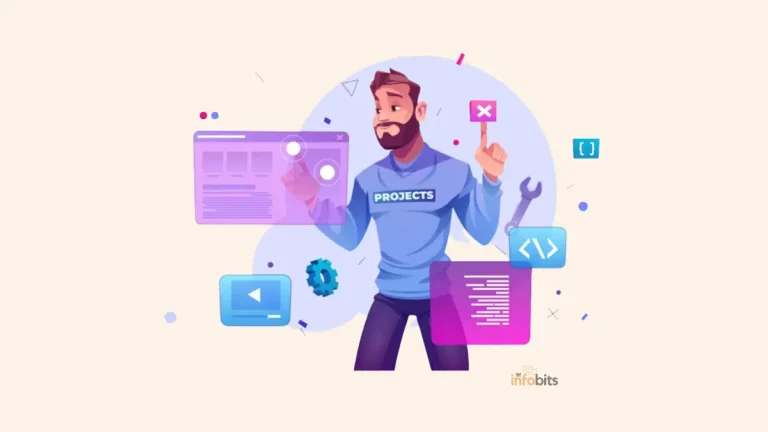An Ultimate Guide Of MP3 vs MP4 | Difference Between MP3 and MP4
Digital file formats have changed in tandem with technical progress. Even though it is not the only digital audio file format, MP3 has become associated with digital music in the same way that Google has become popular with web searches.
Several file formats, notably MP4, have now overtaken it.
What is the major Difference Between MP3 and MP4?
Both of these are file formats that are used to store files. But there is a significant distinction between MP3 and MP4. They hold various types of files.
The most important difference between MP3 and MP4 is the type of data that each can hold. MP3 files only include audio, but MP4 files combine audio, video, graphics, subtitles, and text.
MP3 stands for “audio coding,” but MP4 stands for “digital multimedia container.“
MP3 vs MP4- A Basic Comparison
MP3 and MP4 are two of the most used media file formats today, yet despite their apparent similarity, they are very different. Here’s how we compared MP3 vs MP4.
We have seen that MP4 and MP3 are two data compression formats that are used to hold digital media.
Is MP4 better than MP3 and a newer version of MP3?
Nope, it doesn’t. Both of these have unique advantages.
And what precisely are the differences between MP3 and MP4?
All fantastic questions, which we will attempt to address using as little technical jargon as possible.
The one-digit difference (3 and 4) may give the appearance that they are almost equal, yet this could not be further from the truth. Many people believe that MP4 is the most recent version of MP3. But that is not the case.
They have different uses, histories, and benefits – but, once again, MP3 and MP4 are not the same things.
In this post, we’ll go over some of the most important distinctions that everyone should be aware of. By the conclusion of this article, you’ll know which file format is appropriate for your purposes.
MP3 vs MP4 – Basics
However, before getting into the differences between MP3 and MP4, it’s vital to understand where the two file formats originated.
What Does MP3 Stand For?
MPEG-1 Audio Layer 3 is the full form of MP3. In the early 1990s, it was one of two formats supported by the MPEG audio format.
The Moving Picture Experts Group invented the MP3 or MPEG audio Layer-3 file format (MPEG).
When you hear the word MP3, you should understand that MP3 means MPEG Audio Layer 3.
Philips, the French research institution CCETT, and Germany’s Institute for Broadcast Technology all backed the format because of its simplicity, absence of defects, and computational stability.
It was designed to be a smaller format for storing audio digital content than the CD format at the time.
It is used to store only audio files. MP3 files became public domain in 1993 as a result of a decision taken in 1991.
What is MP4?
MP4 is an abbreviation for MPEG-4 Part 14. This technology is based on Apple’s QuickTime MOV format, but it includes compatibility with some MPEG features.
The MP4 or MPEG-4 AVC (Advanced Video Coding) file format was created by the Moving Image Experts Group (MPEG).
While the MP4 file format was initially launched in 2001, it was not extensively utilized until its re-release in 2003.
File Formats – MP3 vs MP4
The most significant distinction between MP3 and MP4 is the type of data that may be stored in each.
MP3 files solely include audio, but MP4 files contain audio, video, pictures, subtitles, and text. MP3 is for “audio coding,” but MP4 is a “digital multimedia container.”
Applications for MP3
MP3 files have become the industry standard for music apps, portable media players, and music streaming services due to their improved audio storage capacity.
You should be certain that the MP3 will function properly right out of the box, regardless of the operating system or device you use. As a result, MP3 players will be worthwhile purchases as well.
The way the file type operates is the fundamental reason for its success. MP3 employs lossy compression to dramatically reduce the size of an audio file while not influencing its performance.
The technique operates by eliminating any data that is outside of the normal human hearing range and compressing the rest as effectively as feasible.
JPEG files employ the same method to reduce picture size while retaining essential detail, resulting in images that look as good as the original.
MP3 also allows users to choose between file size and audio quality. If you are an expert in that field, you may select greater file sizes, greater bitrates, and better audio quality.
On the other side, cramming as much music as possible onto your portable device might result in reduced file size and audio quality.
Despite taking up one-tenth the storage capacity of a CD audio track, most people find them to be a pleasant listening experience.
We would like to point out that not every MP3 audio has the same file size. It is purely governed by the sample rate and bitrate used to produce and convert the audio file.
When a CD format is converted to MP3, the sampling rate is commonly 44.1 kHz. The bitrate, on the other hand, can range from 8 to 320 kbps. In this situation, the 8kbps MP3 sample has poorer quality than the high-quality 320kbps sample.
MP3 files will also continue to be smaller than MP4 ones. If you’re running out of capacity on your MP4 music player or smartphone, you may convert any MP4 music to MP3.
Please keep in mind that the audio quality may deteriorate as a result of this.
Applications for MP4
In contrast to an MP3, which is solely used to retain audio, an MP4 is a container file that may hold music, video, pictures, and additional data such as subtitles.
MP4 files are “containers,” which means they hold data rather than the file’s code. As a result, MP4 files do not have a native method of dealing with file coding. Codecs are used to decide how encoding and decoding will be done.
There are hundreds of codecs available today, but only a few of them are compatible with typical MP4 devices. A player must have the same codec as the file to read and play an MP4 file.
The following are the most often used codecs:
Video formats include MPEG-4 Part 10 (H.264) and MPEG-4 Part 2.
Audio formats include AAC, ALS, SLS, TTSI, MP3, and ALAC.
MPEG-4 Timed Text Subtitles
MP4 has a substantially wider range than MP3, according to these codecs. M4A files (MP4 files that solely include audio) will, for example, support both AAC (Advanced Audio Coding) and Apple Lossless Audio Coding (ALAC).
The user has several high-quality alternatives. In this situation, the file will behave similarly to an MP4, but the data stored within it will be significantly different.
MP4 files can contain video, pictures, and text in addition to audio. Various file extensions are frequently used to indicate the type of data stored within the container.
The following are some of the most common file types:
MP4 is the sole official extension.
M4A is a lossless audio format.
Podcasts and audiobooks in M4B format.
FairPlay Digital Rights Management encodes M4P audio format.
MPEG-4 Visual bitstreams (M4V).
Related: What Is the Difference Between a Monitor and a TV?
Metadata for MP3 and MP4 Files
Metadata is supported in both MP3 and MP4 formats. It would be hard to utilize music player apps (like iTunes) or home media servers (like Plex) properly without it.
ID3 tags are embedded in MP3 files. They let you retain information like the song title, artist, band, track number, and even album artwork within the file itself.
The tags are stored at the end of the file’s coding, and their contents are either discarded or disregarded by decoders as non-MP3 trash files. A well-known MP3 tag program may be used to modify these tags.
Metadata can also contain other associated data, such as ReplayGain data or DRM limitations.
Because of its compatibility with a broad range of file formats, including PDF, JPEG, GIF, PNG, HTML, TIFF, Adobe Illustrator, PSD, WAV, and PostScript, XMP metadata is well-suited for MP4’s container format.
MP4 files, like MP3 files, support metadata, but they also support the Extensible Metadata Platform (XMP).
MP3 vs MP4 Which Has Better Sound Quality?
Because an MP3 is both a file format and a codec, it can only accept audio using the lossy compression as outlined above.
Because MP4 files are containers, you may select from a variety of audio codecs based on your requirements.
AAC (Advanced Audio Coding) is the most extensively used codec. It’s a lossy compression codec, comparable to MP3, with the same bitrate accuracy settings, but it maintains more musical information and intricacies at the same file size.
ALAC, Apple’s high-resolution lossless audio codec, is also an MP4 media option, preserving most of the information of a CD or vinyl record while maintaining smaller file sizes than the original, making it a suitable choice for storing music.
When it comes to archiving digital or analog music, an MP4 with ALAC outperforms an MP3. ALAC is a lossless format that keeps all of the features of your original material while also supporting you in creating MP3s (or MP4/AACs) if you require a smaller, more portable version.
However, this is not the case: it is not feasible to convert an MP3 to an MP4/ALAC file once it has been made (and parts of the original audio material are lost in the compression process). As a result, a bigger file with the same quality as the MP3 is created.
So always keep in mind that in the MP3 or MP4 choice decision, conversion of an MP3 file to an MP4 codec is not possible.
What Is The Difference Between MP3 and MP4-Summary
We tried to be as practical as possible in explaining the two file classes, and we hope you now have a better understanding of the difference between MP3 and MP4.
The following is a summary of the differences between MP3 and MP4:
| MP3 | MP4 |
| It came out in 1993. | It was first introduced in 2003. |
| Mp3 is an audio coding format. | MP4 is a portable multimedia container format. |
| MP3 is solely capable of managing audio files. | MP4 can accommodate a variety of media formats, including audio, images, video, and text. |
| The file extension used is .mp3. | The file extension utilized is .mp4. |
| MP3 is a means of compressing data without compromising quality. | MP4 is a video and audio encoding technique that degrades both audio and video quality. |
| MP3 is a more powerful variant of MP2. | MP4 is formed by combining Apple QuickTime .mov and MPEG-4 Part 12. |
Finally, MP3 is the format to choose if you wish to save music for usage on portable devices. If you want to store video or download files from the internet, MP4 is the codec to use.
Frequently Asked Questions
Is it MP3 video or Audio?
MP3 refers to audio, especially a digital audio format, and is a widely utilized compression method for compressing audio data while preserving an adequate level of audio quality.
Is MP4 video or audio?
MP4 is a digital multimedia container format that may hold music, video, and other forms of media such as titles and images.
Is MP3 lower quality than MP4?
In terms of quality, comparing MP3 and MP4 is difficult because they serve distinct objectives. MP3 is primarily an audio format that was created to compress audio data while maintaining acceptable sound quality. To minimize file size, some audio information must be sacrificed. MP4 is a multimedia container format that can store both audio and video data as well as other forms of media. When used with newer codecs such as AAC, MP4 can deliver superior audio quality over MP3 for audio-only needs. MP3 is often used for music playing in a variety of contexts, but MP4 is commonly used for video material due to its capacity to store both audio and video simultaneously.
Is MP3 bigger than MP4?
When comparing audio-only content, MP3 files will be smaller than MP4 files that contain both audio and visual data.
Why MP3 is better?
MP3 is regarded as “better” depending on the context and the unique use case. However, MP3 files are generally smaller in size when compared to other audio formats; they are one of the most widely supported audio formats across various devices; they provide adequate audio quality; they have been around for a long time; and they have a substantial historical catalog of music available in this format. MP3 files are also well-suited for streaming music over the internet due to their reduced file sizes.
We hope you found this information useful for you, and please like and follow us on Facebook and Twitter for regular updates.
We also request that you bookmark this page for future reference. Sign up for our free newsletter as well to receive new information in your inbox regularly and stay technically up to date.







